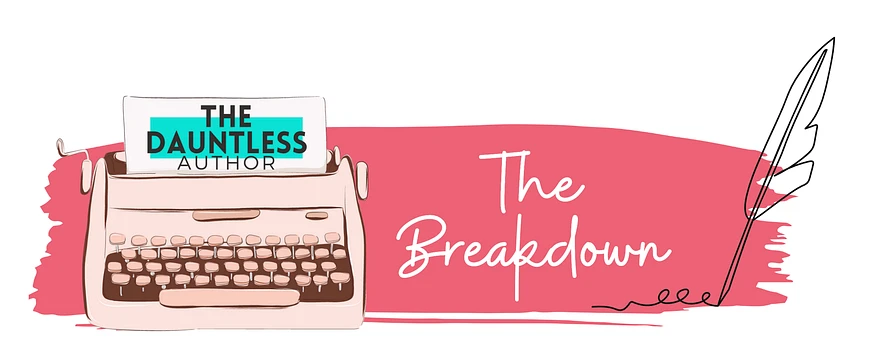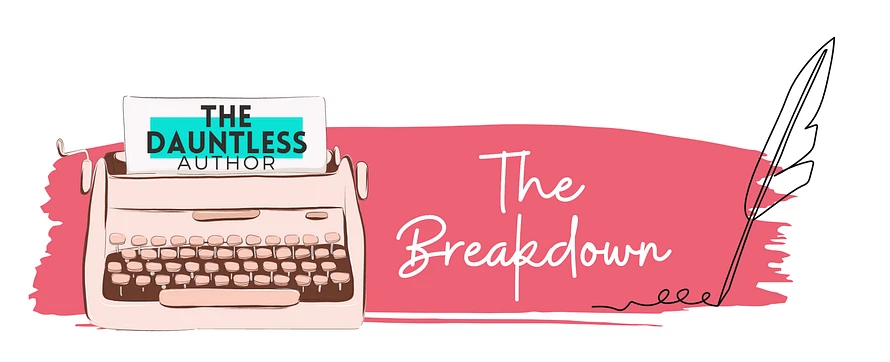You Don't Need to Pay Anyone to Publish Your Book
I've had multiple coaching clients come to me recently with the same concern: "Lindsey, this company says they'll publish my book for $3,000. Is that normal?"
Let me be crystal clear: You never have to pay someone to publish your book. Ever.
This isn't about being cheap or cutting corners—it's about understanding your options and making informed decisions about your author career.
The Truth About Publishing
Here's what's real: Traditional publishing houses will never ask you to pay them. In fact, money flows to the author, not away from them. Publishers pay advances, cover production costs, and handle distribution because they believe your book will make money.
But what about all those companies advertising publishing services? They're not lying when they say they'll publish your book—they're just not telling you the whole story.
What "Paid Publishing" Really Means
When you pay a company to publish your book, you're essentially hiring them to do what you can do yourself. They're offering services like:
-
Cover design
-
Formatting
-
ISBN registration
-
Distribution setup
-
Basic marketing
These are legitimate services, and some authors choose to pay for them. But here's what they don't always make clear: none of these services require their specific company, and many can be done for free.
Your Free Publishing Options
You can self-publish your book at zero cost using platforms like:
-
Amazon KDP (Kindle Direct Publishing)
-
IngramSpark (for wider distribution)
-
Draft2Digital (distributes to multiple retailers)
These platforms provide:
-
Free formatting tools
-
Basic cover design options
-
ISBN assignment (or you can get your own)
-
Global distribution
-
Print-on-demand services
When Paying Might Make Sense
I'm not saying you should never invest in your book. Professional editing, custom cover design, or marketing services can be worthwhile investments. The key difference is understanding what you're paying for and having control over those decisions.
If you choose to hire professionals, hire them directly:
-
Find a freelance editor through organizations like the Editorial Freelancers Association
-
Work with cover designers on platforms like 99designs or Reedsy
-
Hire marketing professionals who specialize in your genre
Red Flags to Watch For
Be wary of companies that:
-
Contact you first (especially after seeing your social media posts about writing)
-
Promise bestseller status or guaranteed sales numbers
-
Rush you into signing contracts
-
Are vague about what services are actually included
-
Don't clearly explain your rights and ownership
The Bottom Line
Publishing your book is absolutely achievable without spending thousands of dollars. Whether you choose traditional publishing, self-publishing, or hybrid approaches, you have options that don't require hefty upfront payments.
Your book deserves to see the world—but you shouldn't have to mortgage your future to make that happen.
Take Control of Your Author Journey
The most empowering thing you can do as an author is educate yourself about your options. Research the different publishing paths, understand what each one offers, and make decisions based on your goals and budget—not on pressure from sales calls.
Remember: you wrote the book. You have the power to decide how it gets published.
What questions do you have about publishing paths? Drop them in the comments—I read and respond to every one.
Why Disaster Romance is Pure Storytelling Gold
Survival romance sets an epic stage for romantic tension.
I'm not trying to convert you to writing this genre - BUT I DO WANT YOU TO THINK ABOUT THE ART OF STORYTELLING. How you can create these high-stakes and emotionally ridden situations in your stories.
Look, I'm a romance junky, so I don't say this lightly. But in my humble opinion, writing disaster fiction and romance together isn't just epic—it's storytelling genius. Here's why this combination creates some of the most gripping character development and tension you'll ever write:
1. You're Writing in Virgin Territory We've all seen the billionaire and sports romance markets. They're saturated, and honestly? Some readers are getting bored with the same formulas. That's why there are always new genre trends on the rise.
But survival romance? You're practically writing in virgin territory. There's so much unexplored emotional and plot real estate here that you can truly make your mark as an author.
2. Your Character Development Writes Itself Here's the thing about high-octane disaster scenarios—they strip your characters down to their absolute core. No masks, no pretenses, just raw humanity fighting to survive. That guttural fear that makes your throat close? That's universal. Every reader has felt it, which means instant emotional connection. Your characters aren't just falling in love—they're discovering who they really are when everything else falls away.
3. You Get the Ultimate Antagonist Mother Nature doesn't negotiate. She doesn't have character flaws you need to justify or backstory you need to develop. She's pure, relentless force—and she makes every other villain look like child's play. Your billionaire hero's money means nothing against a Category 5 hurricane. Your mafia don is just as vulnerable as anyone else when the ground starts shaking. It's the great equalizer, and that creates incredible storytelling opportunities.
4. Tension That Practically Writes Itself And here's where it gets really good for us romance writers—survival situations are tension goldmines. Forced proximity isn't just a convenient plot device anymore; it's literally life or death. Characters sharing body heat isn't cute—it's survival. That abandoned cabin isn't romantic—it's shelter. But somehow, in that raw, desperate environment, love still finds a way. That's the kind of storytelling that keeps readers turning pages at 2 AM.
The sexual tension writes itself because the stakes are already sky-high. Add enemies-to-lovers into a disaster scenario? Chef's kiss Pure magic.
The Bottom Line
In my opinion, disaster romance gives you everything: fresh territory, automatic character development, an unbeatable antagonist, and tension that practically leaps off the page. It's high-octane storytelling that forces both your characters and your readers to confront what really matters when everything else gets stripped away.
It doesn't have to be a dystopian world. You can still make the conflict external and deeply, emotionally gripping.
What disaster scenario would you want to throw your characters into?
Dean and Harper's story reminded me why I love this genre so much—their character development in extreme circumstances was some of the most rewarding writing I've done. The banter alone was worth every challenging scene!
Let me know your thoughts or questions in the comments!
Linds
The 7 Hidden Stages Every Novel Goes Through (That No One Talks About)
My short and sweet roadmap from chaotic thoughts and blank pages to writing The End and slipping that baby onto your bookshelf.
As aspiring authors, you see the finished novels on shelves and think, “How do I get from blank page to that?” What you don’t see are the messy, invisible stages that every published author goes through. Here’s the real roadmap based on my experience:
1. The Spark & Chaos Stage Every book starts with a whisper—a random idea, a “what if,” or dialogue that won’t leave you alone. At this stage, it’s all chaos and excitement. You feel like you cannot write fast enough. Sticky notes everywhere, half-formed characters, messy notebooks. Nothing makes sense yet, but the excitement is electric.
2. Building the Skeleton Once the spark takes hold, give it structure. Outlines, character sheets, world-building documents, plot beats. Think of it like laying out bones—not pretty, but it’s the foundation that holds everything together. I never miss this step—my brain gets too chaotic and I lose steam if I don’t find structure.
3. Research & World-Building This is the rabbit-hole stage. Whether it’s survival tactics, historical accuracy, or fantasy lore—dive deep. Readers might not notice every detail, but they feel it when your world is solid and authentic. Even when I make up my own lore, it has to make sense in the world. You can’t get sloppy! World-building is the glue that holds your story together.
4. Drafting in Layers Your first draft is NOT your book—it’s raw material. It’s fluid and I can’t be rigid in this. Sometimes, I even draft scenes out of order, leave gaps, write placeholders like “insert epic fight here” and “something funny here” when rushing to capture ideas. Each draft adds depth, polish, and heart.
5. The Brutal Cut This is what aspiring authors fear most: the cutting room floor. Sometimes, entire chapters get rearranged or deleted. Character arcs change. Your favorite scenes might not make the final cut. It’s painful but necessary—the story is always stronger for it. The quicker you can accept that and embrace it, the better off you’ll be.
PRO TIP: Keep what you don’t use. Deleted scenes are GOLD. You might not want to do anything with it now, but you never know if you want to do a special edition one day, or offer a sneak peek behind your process to members later. I ALWAYS keep those morsels.
6. Feedback & Collaboration Writing looks and feels solitary, but no published book exists without collaboration. Beta readers, critique partners, editors, proofreaders—they help transform your story into something tighter and more impactful. Embrace this stage instead of fearing it. Get a good group together to help your story shine!
7. Transformation & Publication The final stage involves copyedits, cover design, formatting, marketing—the business side that transforms your manuscript into an actual book. It’s not always fun, but when you finally hold YOUR book, it's hard to believe it started as a scribbled late-night idea.
✨ Remember: Every published author has walked this exact path. The difference between published and aspiring authors isn’t talent—it’s persistence through these seven stages.
Your novel isn’t just words on a page—it’s proof you can turn chaos into story (and your dreams into reality).
Be dauntless!
Linds









